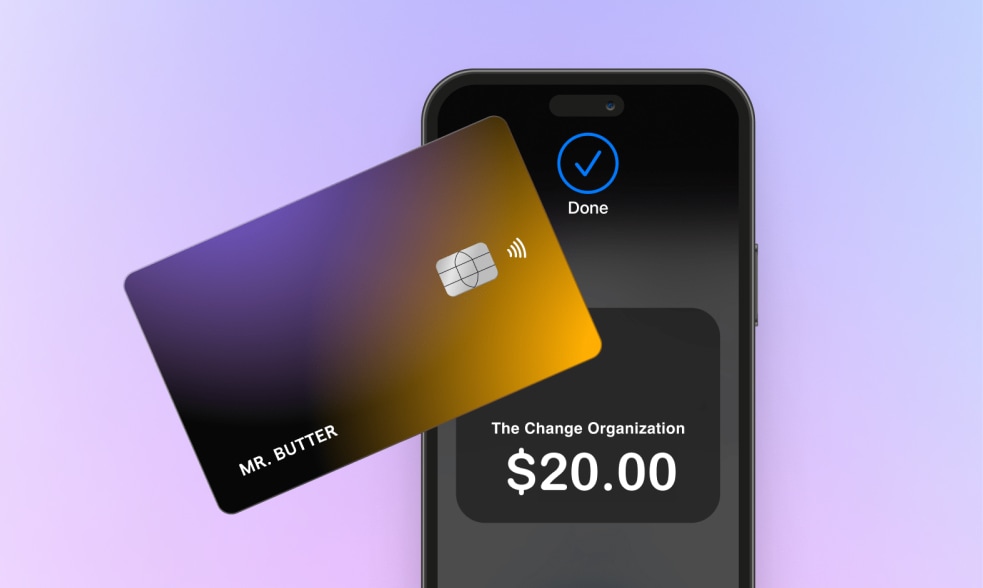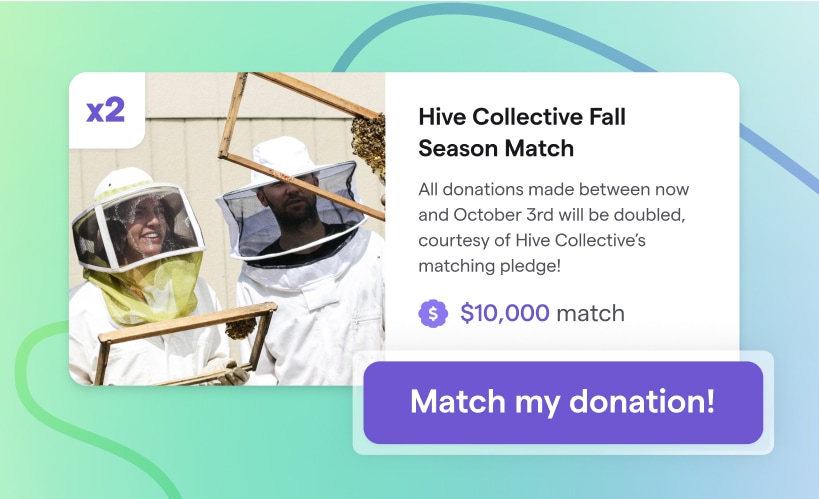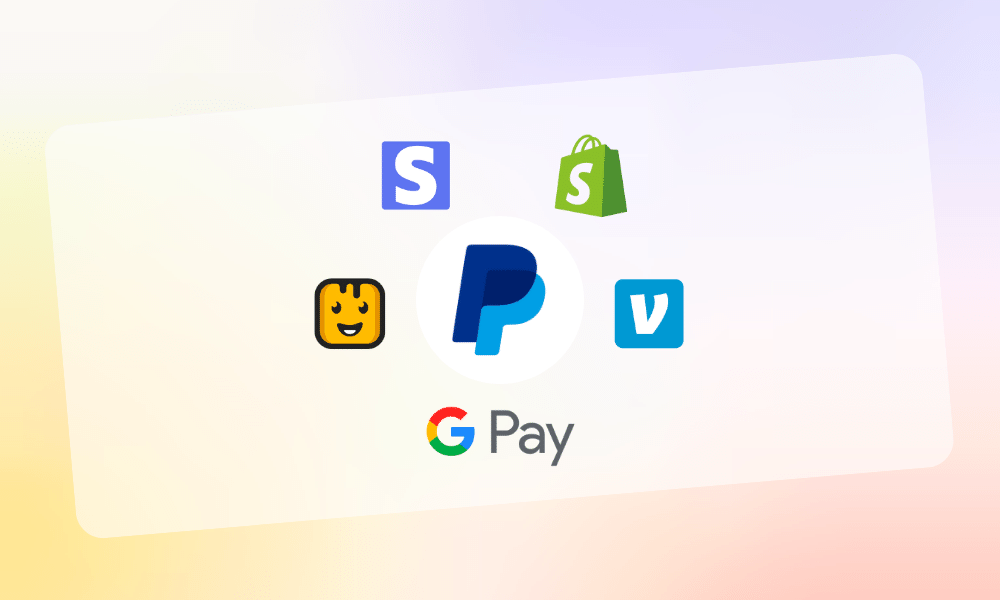Table of contents
Table of contents
PayPal is one of the most popular and long-standing payment gateways out there, which is why many nonprofits choose PayPal as their primary credit card processor. Nonprofits can embed PayPal donate buttons and forms on their website, donors can give one-time or recurring gifts, and organizations get access to basic donor information.
While many people appreciate how easy and safe it is to use PayPal, the platform's cons send several nonprofits searching for alternatives.
PayPal isn’t the most expensive payment gateway out there, but for what it provides, nonprofits can find cheaper choices that offer more features. If you’re tired of murky transaction fees and limited payment methods, here some of the top PayPal alternatives for nonprofits:
1. Givebutter: For a free all-in-one fundraising solution
2. Stripe: For a fast-growing payment processor
3. Venmo: For highly social givers
4. Google Pay: For forgetful donors
5. Shopify: For a simple system to sell products
1. Givebutter: For a free all-in-one fundraising solution
💸 Price: Givebutter is completely free to use, thanks to optional donor tips. All donations on Givebutter are securely processed through its PCI-compliant payment processing partner, Stripe, which does charge a flat 2.9% + $0.30 per transaction. However, donors can opt-in to cover this fee for you when they give through Givebutter—and 95% of donors do!
⭐ Best for: Givebutter is great for any nonprofit that wants to go beyond just accepting donations and get access to social fundraising pages, engaging event tools, in-house email and SMS automation features, and more—all for little to no cost.
👉 Our take: Comparing PayPal to Givebutter is like comparing canned tuna to sushi. They’re both fish, but that’s where the similarities end.
PayPal accepts all major credit and debit cards, PayPal, and ACH. Givebutter accepts all major credit and debit cards, ACH, Google Pay, Apple Pay, Venmo, checks, cash, and even PayPal donations (so you can get the best of both worlds!).
PayPal users are limited to standard donation forms. Nonprofits that use Givebutter can customize all fundraising pages, donation forms, events, and auctions, and embed donate buttons and forms directly to their website. Plus, once a donor gives a one-time, monthly, quarterly, or yearly donation, their information and history is stored in Givebutter's free nonprofit CRM. Nonprofits can use this database to segment donors and send personalized donor appeals.
Sign up for your free account today and see why Givebutter is the leading alternative to PayPal for nonprofits.

Take PayPal donations to the next level with Givebutter
2. Stripe: For a fast-growing payment processor
💸 Price: Stripe is another popular processor. Like PayPal, Stripe is free to use but charges a transaction fee of 2.9% + $0.30 per transaction. Additional fees apply for manually entered cards, international payments, and access to Stripe’s other features.
⭐ Best for: PayPal is often the first choice of new nonprofits, but as your organization grows and you want to give donors more ways to give, Stripe’s features will likely be a better fit.
👉 Our take: Nonprofits quickly see the difference between Stripe and PayPal. Unlike PayPal, Stripe allows donors to use any credit card, ACH, Apple Pay, Google Pay, and most international payments. Nonprofits also see donations in their bank account much faster with Stripe.
That’s just the back end.
Donors also notice the difference. With PayPal, donors are transferred to a different website to make a payment. This decreases the trust donors have in the nonprofit. Donors using Stripe don’t have to create a separate account and can enter their credit card or bank account information on the nonprofit’s website.
While both payment processors can help nonprofits raise money online, it’s important to note that neither Stripe nor PayPal was designed specifically for nonprofits. There are workarounds to turn Stripe’s modern checkout flows into a donation-driving machine, but you may need to look elsewhere to find key fundraising features like peer-to-peer and team fundraising.
3. Venmo: For highly social givers
💸 Price: Venmo has a nonprofit payment processing fee of 1.9% + $0.10 per transaction when you receive a payment as a confirmed charity profile. Donors may also pay additional fees when sending money, depending on their chosen payment method.
⭐ Best for: Venmo lets donors and nonprofits share on social media when they give or receive donations on top of sharing each transaction in Venmo's social-media-style feed (as long as the transaction isn’t set to private). This feature can help nonprofits stand out and reach a larger online audience in the cyber culture we live in.
👉 Our take: Venmo makes donating a breeze, and the perk of sharing when giving or receiving gifts helps promote your organization and makes donors feel good.
However, Venmo doesn’t allow donors to set up recurring gifts, and nonprofits can't use it to automatically send out tax receipts—which are deal breakers for many organizations. You also can’t embed a donation form on your website with Venmo, but nonprofits can set up a charity profile and share a QR code with donors.
4. Google Pay: For forgetful donors
💸 Price: Google Pay is free to download, but there is a $0.31 or 1.5% fee (whichever is greater) per transaction to send or receive money through the app. It’s important to note that transfers can only be made through debit cards; otherwise, you may face up to a 4% transaction fee for using a credit card.
⭐ Best for: Thanks to how quick and easy Google Pay is, it can be ideal for nonprofits soliciting new donors or looking for a way to accept contactless in-person payments.
👉 Our take: Google Pay is a digital wallet that lets donors save credit and debit cards, loyalty cards, gift cards, bank accounts, coupons, event tickets, and more. This is exceptionally convenient when donors attend in-person or outdoor events and forget their cards.
Another benefit to nonprofits comes from Google Pay’s tracking system. Donors receive insights on spending, savings, and any upcoming bills. These reminders help keep them on track and manage recurring gifts to nonprofits. The money is also immediately sent to your nonprofit's bank account, so there aren't the same wait times nonprofits can expect with PayPal.
5. Shopify: For a simple system to sell products
💸 Price: Shopify offers two plans for nonprofits, NPO Lite and NPO Full. Some third-party websites state these plans range from $9–$99 a month and include a 2.9% + $0.30 processing fee, but you will have to contact Shopify's support team to get more details on their nonprofit pricing.
At first glance, Shopify's pricing appears higher than PayPal’s, so why would anyone want to use Shopify? Even the basic plan includes two staff accounts, four inventory locations, and up to 77% in shipping discounts—that’s why!
⭐ Best for: Organizations that sell a lot of products and have more than one location can significantly benefit from this platform.
👉 Our take: Shopify makes it easy to set up a merchant page through its website, offers various page templates, and lets you embed forms onto your own website. Plus, their email marketing and advertising tools seamlessly integrate with your online store.
While Shopify lets nonprofits sell products and accept donations from credit cards online or in person, many nonprofits find themselves needing to install third-party apps (for additional monthly costs and transaction fees) to fill some of the fundraising gaps.
The bottom line
PayPal may be the most well-known credit card processor out there, but with a little research, nonprofits can find more affordable alternatives with more features suited to meet their needs.
With Givebutter, you can securely accept one-time and recurring donations, offer a wide variety of payment methods, embed donate buttons and donation forms, and create social fundraising pages, events, and auctions—all in one place, all completely free.
Sign up for your free Givebutter account to start raising funds, hosting events, and communicating with donors in real time today.
P.S. — Even if Givebutter wasn’t your first choice, you can still switch to Givebutter in three easy steps!









%20(1).png)







.png)









.svg)
.svg)
